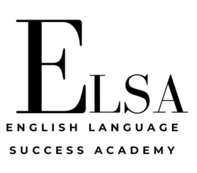Objective: Help the learner become fluent with advanced educational vocabulary by using terms in context and discussing their relevance in real-life educational settings.
Materials: None required
Step 1: Vocabulary Introduction (5-10 minutes)
Instructions:
- Introduce each word one by one, giving a brief, spoken definition.
- After each definition, ask the learner to repeat the term and briefly explain it back in their own words.
- Check comprehension by asking questions like, “What does scaffolding look like in practice?” or “Why might metacognition be important for students?
Vocabulary List:
- Pedagogy
- Differentiation
- Formative Assessment
- Scaffolding
- Experiential Learning
- Curriculum Design
- Constructivism
- Metacognition .
- Inclusive Education
- Instructional Strategy
Step 2: Term in Context (10-15 minutes)
Instructions:
- Choose a term from the list and ask the learner to give an example of how they might use or see this concept in a classroom setting.
- For example: “How could you use scaffolding to help a student struggling with a new concept?”
- Continue with a few other terms in this format, ensuring each term is discussed in a realistic educational context.
Sample Prompts:
- “If you were teaching a large class with different learning levels, how would you use differentiation?”
- “What role does formative assessment play in helping students succeed?”
Goal: Encourage the learner to relate each term to their own educational experiences, building confidence in using the vocabulary in practical ways.
Step 3: Situational Roleplay (10-15 minutes)
Instructions:
- Scenario 1: “Imagine you’re teaching a mixed-ability class on a challenging topic.” Ask the learner to choose three terms (e.g., differentiation, scaffolding, and formative assessment) and explain how they would apply each one in this situation.
- For example: “I would use scaffolding by breaking down the topic into smaller steps and differentiation by tailoring assignments to each student’s ability level.”
- Scenario 2: “You need to design a new lesson for a class with students who have diverse learning needs.” Ask the learner to choose three different terms and explain how they would use each one to help make the lesson successful.
- For example: They might use inclusive education strategies to ensure all students feel supported and experiential learning activities to make the lesson engaging.
Step 4: Reflection and Discussion (5 minutes)
Reflection Questions:
- “Which terms felt easiest to use in a real-world scenario, and which were more challenging?”
- “Is there a term or concept you think would be particularly valuable in your own teaching?”
Lesson Outcome: The learner will have practiced using specialized vocabulary in relevant teaching contexts, reinforcing their understanding and ability to discuss educational strategies in English.





